The Relation Between Civic Society and Newspapers in the Writings of Alexis de Tocqueville and Robert Putnam
By Steve Hoenisch
Copyright 1996-2025 Steve Hoenisch | www.Criticism.Com
1 “Equality of Condition”
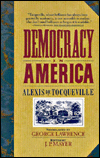
In Democracy in America, Alexis de Tocqueville says that the fundamental condition underlying American Democracy is equality. “This equality of condition,” Tocqueville writes, “is the fundamental fact from which all others seem to be derived.”1 Much of the writing in Tocqueville’s two-volume work documents how the many trends of social and political life – such as the propensity to form associations and to read newspapers – stem from this “equality of condition.”
The purpose of Robert Putnam’s 1993 survey of civic participation in
Italy, Making Democracy Work, is less ambitious. It seeks to
measure the extent to which civic participation is tied to effective
governmental performance. Yet a theoretical concern with social and
political equality 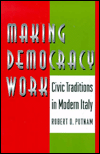 motivates Putnam’s work: He refers to the new republicans, who, rather
than exalt individualism and freedom, praise a communitarian philosophy
founded on equality. Putnam sums up the views of the new republicans by
quoting John Winthrop: “We must delight in each other, make others’
conditions our own, rejoyce together, always having before our eyes our
community as members of the same body.”2
motivates Putnam’s work: He refers to the new republicans, who, rather
than exalt individualism and freedom, praise a communitarian philosophy
founded on equality. Putnam sums up the views of the new republicans by
quoting John Winthrop: “We must delight in each other, make others’
conditions our own, rejoyce together, always having before our eyes our
community as members of the same body.”2
The purpose of this essay is to demonstrate how Robert Putnam’s findings in Making Democracy Work and in a later study he published on civic participation in the United States, “The Strange Disappearance of Civic America,” support Tocqueville’s views. This will be accomplished in two steps. The first will examine whether the specific views of Tocqueville regarding associations and newspapers and the relations between them are borne out in Putnam’s findings. The second step will examine how Putnam’s findings support Tocqueville’s central hypothesis: That equality is the fundamental condition in a democracy from which others are derived. A final section of the essay will specify several normative implications that may be drawn from Putnam’s findings, especially those outlined in “The Strange Disappearance of Civic America.”
2 Associations
Among the many trends that, for Tocqueville, stem from the equality of condition is the tendency to form associations. In nations where all citizens are equal, as opposed to, say, nations ruled by an aristocratic class, citizens must form associations to exercise power, Tocqueville says. A citizen standing alone, while independent, lacks political power, including the power to protect his or her independence. The individual’s lack of political power in turn necessitates that citizens band together to protect their independence. Tocqueville says the formation of associations must grow as equality advances; associations in turn serve to protect the gains in equality by setting against one another groups with special interests and keeping any one of them from becoming dominant. In this way, associations play a dual role in a politically egalitarian system: They not only arise from and but also sustain democracy.
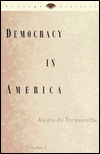
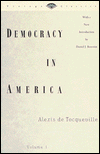 The findings of
Robert Putnam support Tocqueville’s observations. In his survey of civic
participation in Italy, Putnam counts the degree of citizen
participation in associations among the indicators of a region’s degree
of civic community, i.e., the extent to which citizens participate in
public affairs, take active roles in their communities, vote in regional
elections, read newspapers daily, and so forth. Putnam finds that the
propensity to form associations both embodies and reinforces civic
community.
The findings of
Robert Putnam support Tocqueville’s observations. In his survey of civic
participation in Italy, Putnam counts the degree of citizen
participation in associations among the indicators of a region’s degree
of civic community, i.e., the extent to which citizens participate in
public affairs, take active roles in their communities, vote in regional
elections, read newspapers daily, and so forth. Putnam finds that the
propensity to form associations both embodies and reinforces civic
community.
Putnam says Tocqueville observes that, among their participants, associations foster understanding, cooperation, solidarity, and a willingness to take part in political affairs. Surveys analyzed by Putnam support Tocqueville’s views by showing that association members tend to exhibit more social trust, political sophistication, and civic participation than nonmembers.
Putnam’s findings in Italy bear out other observations on associations by Tocqueville. For example, in the introduction to Democracy in America, Tocqueville reveals his belief that within a democratic state, voluntary associations of citizens could serve to protect the community from, in his words, “tyranny and license.”3 Putnam’s study of Italy confirms Tocqueville’s early conjecture, especially if “tyranny” can be taken to include the dominance of the mafia in Southern Italy and if “license” can be taken to include client-patron relationships between politicians and citizens in regions that Putnam found to be low in civic engagement.
Tocqueville also points to a link between civil and political associations, suggesting that there is a natural connection between the two. Tocqueville observes that the more people come together to take part in various affairs, the more adept they become at pursuing common interests together. “Civil associations,” Tocqueville writes, “facilitate political association.”4 Putnam’s study of Italy again supports Tocqueville’s statements. Although Putnam does not document the direct relationship between the existence of civil associations and political ones, he does show that the regions with a comparatively large number of sports, leisure, and cultural associations also tend to be the regions that rank higher in other correlates that indicate civic community. For Putnam, the density of sports clubs, for example, provides the “first clues as to which regions most closely approximate the ideal of the civic community.”5
3 Link between Associations and Newspapers
As Putnam points out, Tocqueville also emphasized the connection between newspapers and associations, civic community, and equality. Specifically, Tocqueville makes the following observations about the relationships among these elements in democratic countries:
Without newspapers, there would be no common activity. Similarly, as the number of associations increases, so does the number of newspapers.
An inverse relationship holds between administrative centralization and the number of newspapers: The less centralized the government, the more newspapers there are.
As citizens become more equal, the necessity of newspapers increases.
Although his survey of Italy did not directly address all three of these observations by Tocqueville, Putnam did find that the incidence of newspaper readership was indeed closely correlated with membership in associations (other than religious ones). Putnam also found that the regions with the highest levels of newspaper readership were the same regions in which a strong civic community was otherwise the norm. This is one way in which Putnam’s findings link Tocqueville’s views regarding newspapers and associations back to Tocqueville’s fundamental premise: that equality is the source from which many of the social norms that undergird successful democracy are derived.
But extending Putnam’s findings about the links between newspapers, associations and civic community to (i) the presence of social and political equality and (ii) Tocqueville’s statement that the incidence of newspaper readership and association membership seem to derive from equality poses serious problems.
First, Putnam includes the attribute of equality in his definition of a civic community.6 Thus, the incidence of association participation and newspaper readership – both used by Putnam as indicators of civicness – shows the existence of equality only by implication. In other words, to conclude that Putnam’s findings on civic community confirm Tocqueville’s views that association membership and newspaper readership rise with equality would be to implicitly stack the evidence in Tocqueville’s favor.
Second, it is even a greater leap to conclude that Putnam’s findings support Tocqueville’s hypothesis that newspaper readership and association membership derive from equality. Putnam’s findings, at least as outlined in chapters 1 and 4 of Making Democracy Work, suffice to show only that a positive correlation exists between civicness and association membership and newspaper readership. Putnam does not conclusively show that either equality of condition or the degree of civic community causes greater newspaper readership or association participation. Indeed, to do so would be to engage in circular reasoning. But this does not seem to keep Putnam from engaging in some circular reasoning of his own. He writes: “The more that politics approximates the ideal of political equality among citizens following norms of reciprocity and engaged in self-government,”the more civic that community may be said to be.”7 In other words, the more political equality that citizens in a community have, the more equal that community can be said to be.
Nevertheless, other, more direct studies carried out by Putnam in Italy do directly support Tocqueville’s contention that where there is equality, at least social and political equality, civic participation and successful democratic environments can also be found. (But this does not necessarily mean, as noted above, that all other facts are derived from equality.) For instance, one of Putnam’s surveys included direct questions to regional councilors on equality. His Index of Support for Political Equality closely mirrors the region’s degree of civic community, as a Tocqueville reader would expect. Councilors in the more civic regions were “avowed egalitarians,” while councilors in the less civic regions expressed preferences for leadership by traditional elites within a social and political hierarchy.8 But while Putnam’s Index of Support for Political Equality does not prove that social and political equality generates civic participation, it does lend credence to Tocqueville’s hypothesis.
4 TV Undermining Civic Participation in U.S.
While Putnam’s 1993 book, Making Democracy Work, sought to examine the connection between effective government and civic participation in Italy, his 1996 article, titled “The Strange Disappearance of Civic America,” attempted to uncover the factors behind the sharp decline of civic participation in the United States since the 1960s. The most likely culprit, Putnam discovers, is a factor that even an analyst of culture as insightful as Tocqueville could not have foreseen: television.
Yet the observations that Tocqueville does make are borne out in “The Strange Disappearance.” Again, they include such correlations as the incidence of newspaper readership and participation in civic associations. Indeed, such statistics as the incidence of newspaper readership, voter turnout, and the level of social trust – which rise and fall together – are measures that Putnam uses to calculate civic participation.9
If Putnam’s confirmation of these correlations and his finding that television is the likely culprit behind the decline in civic participation in American are accepted, several normative implications come to light.
 First, if civic
participation – which, as Putnam demonstrates in Making Democracy Work,
underlies successful government performance in Italy – is to be revived,
television will have to brought into check. Unfortunately, it may be
that this can be done only at the cost of infringing on freedom of
expression. On the other hand, perhaps the Federal Communication
Commission could regulate television without violating free speech.
Because airwaves are part of the public domain, the FCC could require
television stations to broadcast a certain amount of “civic”
programming. Specifically, the FCC could, for instance, reintroduce a
revised Fairness Doctrine mandating that stations set aside daily
segments for the presentation of conflicting views by citizens on
community issues. The FCC could also impose daily requirements of
community access as conditions for the renewal of a station’s
broadcasting license.
First, if civic
participation – which, as Putnam demonstrates in Making Democracy Work,
underlies successful government performance in Italy – is to be revived,
television will have to brought into check. Unfortunately, it may be
that this can be done only at the cost of infringing on freedom of
expression. On the other hand, perhaps the Federal Communication
Commission could regulate television without violating free speech.
Because airwaves are part of the public domain, the FCC could require
television stations to broadcast a certain amount of “civic”
programming. Specifically, the FCC could, for instance, reintroduce a
revised Fairness Doctrine mandating that stations set aside daily
segments for the presentation of conflicting views by citizens on
community issues. The FCC could also impose daily requirements of
community access as conditions for the renewal of a station’s
broadcasting license.
If television has undermined civic participation for the generations that came of age after World War II despite a parallel rise in the level of education that these generations received, especially since, as Putnam points out, education is the strongest correlate of civic engagement, then an important normative implication of these two trends is to better educate school children about television and its effects. Public schools should teach students to analyze television programs and commercials not only for content but also for their potential social and political impact. Social studies curriculums should include substantial components in which students investigate the relationship between television and participatory democracy.
Considering that, as Putnam points out, “controlling for differential TV exposure significantly reduces the correlation between education and engagement” and that children spend on average about 40 hours a week watching TV, another normative implication of Putnam’s findings is that significantly extending the school week of children may eventually result in an increase in civic participation.10 Although television viewing increases with age, people who spend less time as children watching TV and more time engaging in learning and other participatory endeavors may develop into citizens more likely to play active roles in their communities.
5 Widening Gulf between Rich and Poor
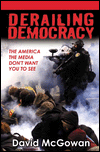 One potential
culprit that Putnam does not consider directly in “The Strange
Disappearance” is social and economic equality. When Tocqueville left a
France dominated by aristocrats to tour America in 1831 and 1832,
nothing struck him more forcibly than the “equality of condition.” Yet
even though Putnam did find strong correlations, at least indirectly,
between political and social equality and civic participation in Italy,
he does not venture to consider the potential effect that social and
economic inequality has had on civic participation in the United States.
Although it would be difficult here to show whether the decline in civic
participation is the cause or the result of inequality, it is clear that
as the gulf between the rich and poor – that is, social and economic
inequality – has been widening, civic engagement has been decreasing. If
Tocqueville’s hypothesis that civic community stems from equality is
true, then one would expect civil participation to drop as equality
decreases. As this seems to be the case, it adds circumstantial support
to Tocqueville’s view, even though the exact nature of the relationship
would need to be further investigated through empirical research.
One potential
culprit that Putnam does not consider directly in “The Strange
Disappearance” is social and economic equality. When Tocqueville left a
France dominated by aristocrats to tour America in 1831 and 1832,
nothing struck him more forcibly than the “equality of condition.” Yet
even though Putnam did find strong correlations, at least indirectly,
between political and social equality and civic participation in Italy,
he does not venture to consider the potential effect that social and
economic inequality has had on civic participation in the United States.
Although it would be difficult here to show whether the decline in civic
participation is the cause or the result of inequality, it is clear that
as the gulf between the rich and poor – that is, social and economic
inequality – has been widening, civic engagement has been decreasing. If
Tocqueville’s hypothesis that civic community stems from equality is
true, then one would expect civil participation to drop as equality
decreases. As this seems to be the case, it adds circumstantial support
to Tocqueville’s view, even though the exact nature of the relationship
would need to be further investigated through empirical research.
Yet other evidence does indicate potential support for Tocqueville’s
observations. Tocqueville, as mentioned above, holds that as citizens
become more equal, the necessity of newspapers increases. If
 his observations
are correct, the inverse should hold as well: as citizens become less
equal, the necessity of newspapers decreases. And, indeed, as the gulf
between rich and poor families in the United States has slowly climbed
to the highest among industrial nations,11 newspaper readership has been
declining, down 39 percent between 1965 and 1980.12 Of course, this does
not mean that a decline in equality necessarily causes decreases in
newspaper readership, nor does it expose the exact nature of the
correlation. But it does show that a correlation between readership and
equality may exist, as Tocqueville observes.
his observations
are correct, the inverse should hold as well: as citizens become less
equal, the necessity of newspapers decreases. And, indeed, as the gulf
between rich and poor families in the United States has slowly climbed
to the highest among industrial nations,11 newspaper readership has been
declining, down 39 percent between 1965 and 1980.12 Of course, this does
not mean that a decline in equality necessarily causes decreases in
newspaper readership, nor does it expose the exact nature of the
correlation. But it does show that a correlation between readership and
equality may exist, as Tocqueville observes.
All told, the findings of Putnam in both his 1993 book and his 1996 essay support the observations of Tocqueville about the relationships between newspaper readership, association participation, and equality. Yet the exact nature of these relationships – whether equality is a cause or a result of them – remains unclear. As such, Tocqueville’s overarching hypothesis that such trends in a democracy as the formulation of associations and the incidence of newspaper readership derive from equality also remains to be verified by further empirical investigation.
6 Notes
Alexis de Tocqueville, Democracy in America, vol. 1, Vintage Classics edition (New York: Random House, 1990), p. 3.
Robert Putnam, Making Democracy Work (Princeton, N.J.: Princeton University Press: 1993), p. 87.
Tocqueville, Democracy in America, Vol. 1, p. 9.
Tocqueville, Democracy in America, vol. 2, p. 115.
Putnam, Making Democracy Work, p. 92.
I am interpreting what Putnam calls “horizontal relations of reciprocity and cooperation” (Making Democracy Work, p. 88) as embodying social and political equality.
Putnam, Making Democracy Work, p. 88.
Ibid. pp. 102 and 103.
Robert Putnam, “The Strange Disappearance of Civic America,” The American Prospect (No. 24, Winter 1996), charts, p. 43.
Ibid. pp. 47 and 48.
“Study: U.S. Tops Wealth Gap,” Associated Press wire story, August 14, 1995.
Squires, James D. Read All About It! The Corporate Takeover of America’s Newspapers (New York: Random House, 1993), p. 94.